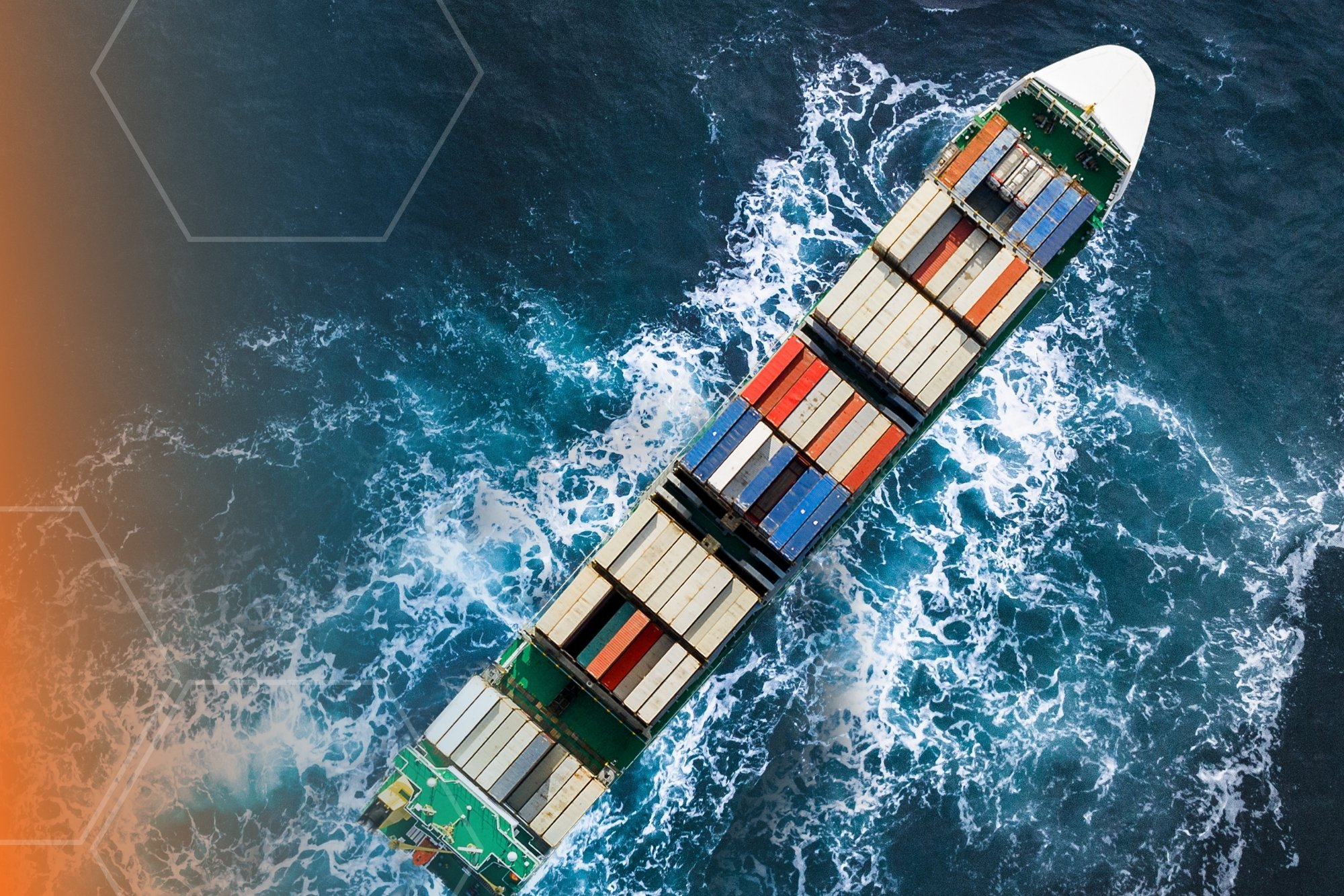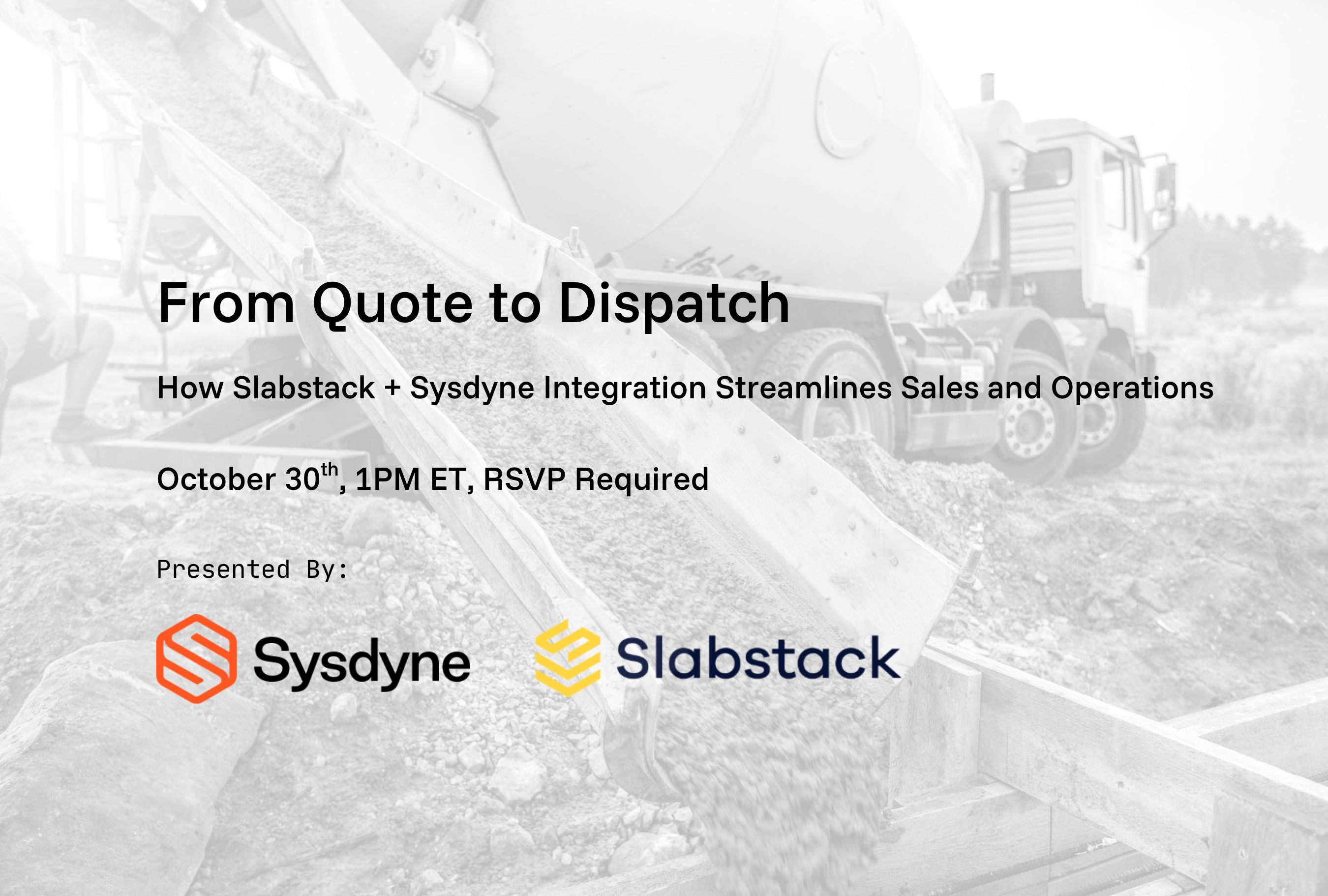
2025’s Concrete Tariffs: The Impact on Ready-Mix Producers
On February 1, 2025, the U.S. government imposed a 25% tariff on goods from Canada and Mexico. As part of a broader trade measure, this policy move directly affects the cost and supply of cement, one of the key ingredients in concrete. Canada and Mexico are among the top cement suppliers, together accounting for 27% of U.S. imports (approximately 7 million tons, or nearly 7% of total U.S. consumption). About 70–75% of U.S. cement sales go to ready-mix companies, and ready-mix plants will experience a significant impact. In this blog post, we'll look at how these tariffs might affect domestic ready-mix concrete producers, focusing on operational and supply chain challenges, cost consequences, and medium- to long-term implications, along with ways that companies can stay safe from the fallout.
Immediate Cost Implications of the Tariffs
The 25% import tariffs are effectively a sudden price hike on cement inputs, which were already on the rise for U.S. concrete producers. Riding a wave of strong demand and limited domestic capacity, costs had reached approximately $160 per metric ton in 2024, the highest in recent years.
25% tariffs on Canadian and Mexican cement will further inflate costs.
Ready-mix concrete producers, who purchase cement either directly or through local suppliers, now face paying a quarter more for any cement sourced from these neighboring countries. In practical terms, a cement load that cost $130/ton before could cost around $162/ton with the tariff, assuming the duty is fully passed through. Such cost increases can significantly squeeze producer margins.
Industry estimates suggest that concrete prices will continue to go up as demand rises and producers find themselves with no choice but to pass on the higher cement costs to contractors and builders. Of course, this will mean higher prices for end consumers as well.
Supply Chain Consequences
The U.S. cement market has experienced tight cement supply in recent years, with domestic plants running near capacity and imports filling the gap. Beyond cost, the new tariffs will introduce supply chain complications for ready-mix concrete producers.
Under the new tariffs, some import channels may slow or reroute, at least initially, as suppliers and buyers evaluate the economics.
Canadian and Mexican cement is delivered by rail and ships across the Great Lakes into border states through terminals that directly feed local ready-mix batching facilities. While cement from overseas (e.g. Asia or Europe) could theoretically be brought in by ship to U.S. ports, it cannot easily match the efficiency of established cross-border rail deliveries into inland markets. Ready-mix producers in affected regions might face delays or logistical hurdles if they suddenly must seek cement from more distant suppliers.
It will be necessary to coordinate closely with suppliers, potentially ordering further in advance or diversifying suppliers, to keep their concrete plants running efficiently.
Anticipated Regional Impact
The impact of the 2025 tariffs on ready-mix producers will likely be uneven across different U.S. regions, corresponding to each region’s dependency on imported cement. Portland Cement Association (PCA) data shows that Canadian imports accounted for roughly a third of cement consumption in a cluster of northern states. In states like Washington, New York, and Michigan, many ready-mix concrete producers rely on Canadian cement shipped through Great Lakes or border crossings. These producers now face a 25% cost surge on a large share of their cement supply, putting them at a disadvantage compared to producers in interior states served by domestic cement.
Unless domestic cement suppliers in the Northeast and Northwest ramp up output, ready-mix companies in those areas will contend with both higher costs and the possibility of tight supply.
In the Southwest, on the other hand, many ready-mix producers have been buying cement from Mexico. The Mexican imports make up a smaller percentage of those states’ total cement usage (around 5% in Texas, Arizona, California, and Florida), so the immediate effect might be more modest in terms of supply. However, Texas and the broader Gulf region are huge consumers of cement; even a 5% supply gap can equate to significant volume. If Mexican cement becomes pricier, large multi-state concrete producers in Texas or the Southeast may be forced to shift to alternate suppliers such as countries like Turkey and Greece, which have active terminals in the region. In Florida, which uses a mix of domestic and imported cement, any reduction of Mexican supply might mean turning to Latin American or Asian suppliers who are not subject to the tariff, again depending on port infrastructure to deliver to ready-mix companies.
Logistical bottlenecks are likely in Southern states, as capacity at ports or rail terminals is limited.
Different Experiences for Small and Large Producers
Smaller local ready-mix firms, which often buy cement on the spot market or through distributors, have less leverage during price negotiations and may be hit harder by sudden cost increases than large integrated companies. Larger companies often own or have stakes in cement production or import terminals, and might weather the storm better by reallocating internal resources. Regional independent concrete producers may suffer higher input costs without any offsetting gains. Cost volatility and supply uncertainty resulting from the tariffs will make it challenging to bid and deliver on construction projects.
Ready-mix associations such as the National Ready-Mix Concrete Association are taking an active role in the conversation, voicing concerns on behalf of concrete producers of every size.
Make no mistake, "tariffs will cause U.S. economic distress and adversely impact construction activity and cement consumption.” – Ed Sullivan, Concrete Economist
Looking Toward the Horizon
In the medium and long term, the cement tariffs may lead to both strategic adjustments by ready-mix producers and broader market changes. One expected consequence is increased pressure to expand domestic cement capacity. The PCA reports that U.S. cement companies are ready to invest, provided the government helps address permitting hurdles. PCA’s CEO Mike Ireland says, “U.S. cement manufacturers… believe the right tax, regulatory and permitting environment will lead to more investments in U.S. cement production.”
If tariffs remain in place for an extended period, they may act as a form of market protection that could make new cement plants or kiln reactivations financially attractive.
Over several years, this might result in new cement supply coming online domestically, which in turn would benefit ready-mix concrete producers through more stable local sourcing. However, building new plants and expanding existing facilities both take time and significant capital.
If concrete prices remain elevated, some lower-margin projects might become uneconomical.
Producers may become more selective in the jobs they bid on, focusing on those where cost escalation clauses or public funding can accommodate higher concrete prices. This could dampen construction activity until the market adjusts, especially in price-sensitive private projects.
Prepare Now to Combat the Consequences of 2025 Tariffs
Ready-mix producers should explore alternative strategies to cope with high cement costs and potential supply tightness:
- Increase Use of Supplementary Cementitious Materials (SCMs): Producers can partially replace portland cement in their concrete mixes with materials like fly ash or slag (industrial by-products) where available. Increasing SCM usage can reduce the pure cement required per batch, softening the impact of cement price spikes. The feasibility of this tactic depends on local availability and project specifications, but it’s a known cost-mitigation tactic in times of cement shortage or price inflation.
- Forward Contracts and Inventory Management: Larger concrete producers might secure long-term contracts or bulk purchase agreements with cement suppliers to lock in prices and guarantee supply, insulating them from some volatility. Those with storage capacity may try to stockpile cement ahead of potential price increases or supply crunches.
- Sourcing Diversification: Import-reliant ready-mix concrete companies could seek new import sources that are subject to lower tariffs. For instance, a company in the Northeast might develop a supply line from a Turkish or European cement exporter (subject to only 10–20% U.S. tariff instead of 25%), even if that means bringing cement through East Coast ports and then by truck/rail to inland plants. While not as convenient as the Canadian supply, such diversification could be a hedge if Canadian cement becomes too costly or constrained.
- Cost Pass-Through and Project Selection: Many producers are in a “wait and see” mode, closely watching trade negotiations following the tariff announcement, but it’s likely that, to maintain viability, ready-mix producers will be forced to pass a significant portion of the added cost associated with the concrete tariffs on to their customers.
Fight Back Against Tariffs with Improved Technology
The recent 25% tariffs on imports from Canada and Mexico have introduced significant challenges for ready-mix concrete producers, including escalating material costs and supply chain disruptions. Margins will be thinner than ever and optimizing every facet of operations will be critical to your survival.
Sysdyne's suite of digital solutions enhance efficiency, reduce costs, and provide real-time insights across your entire operation.
ConcreteGO®: Streamlined Dispatching
ConcreteGO® concrete dispatch software provides real-time visibility into order management and fleet operations. The software facilitates efficient scheduling, reduces idle time, and enhances customer satisfaction by enabling dispatchers to access critical data from any location. Its integration capabilities allow seamless communication between sales, dispatch, and delivery teams, ensuring that everyone is aligned and informed.
CloudBatch™: Precision Batching Anywhere
By allowing operators to control and monitor batching operations remotely, CloudBatch™ revolutionizes concrete batching systems. Ready-mix concrete producers can turn real-time data on material usage and inventory levels into informed decisions that minimize waste and optimize resource allocation. The system's architecture ensures uninterrupted operations by allowing batching to continue from any internet-enabled device, even in the event of hardware failures.
iStrada®: Enhanced Delivery Management
iStrada® concrete delivery management software offers comprehensive delivery management features, including GPS tracking, electronic ticketing, and real-time communication with drivers to ensure that deliveries are made efficiently and that any issues are addressed promptly. Digitizing the delivery process improves customer satisfaction, reduces paperwork, minimizes errors, and accelerates billing cycles.
SysdyneBI: Data-Driven Decision Making
SysdyneBI provides actionable business intelligence by aggregating data from various areas of operation. With customizable dashboards and real-time analytics at their fingertips, producers can identify trends, monitor key performance indicators, and make strategic decisions to enhance profitability and operational efficiency.
Sysdyne's ready-mix concrete software platform ensures scalability, flexibility, and continuous innovation, positioning your business for sustained success. Ready-mix concrete producers can leverage the software's easy-to-use, powerful features to create a cohesive, efficient, and responsive operation capable of adapting to the anticipated market fluctuations and regulatory changes caused by the 2025 tariffs.
Let’s navigate the challenges posed by the new tariffs together. Schedule a demo today.


